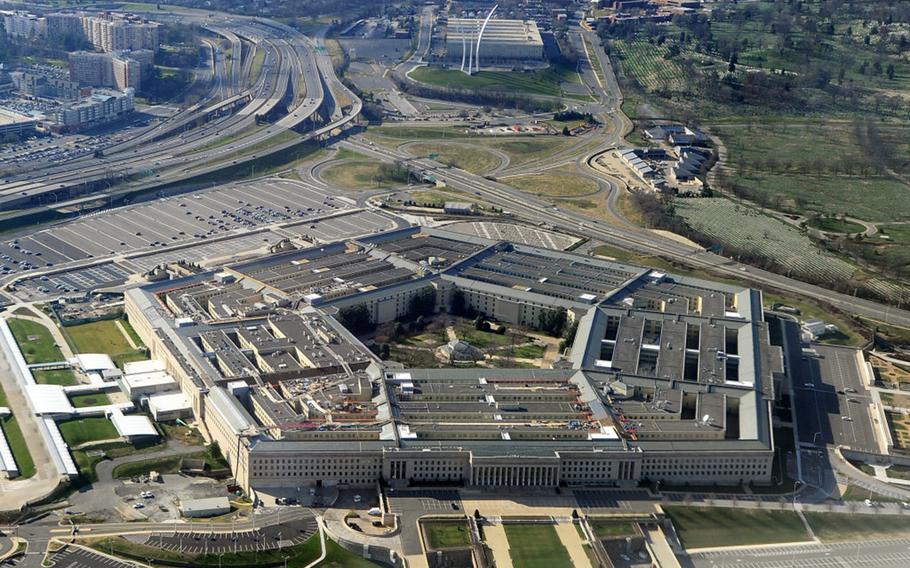WASHINGTON — Defense spending appeared set for a larger-than-authorized increase in the fiscal year that began Oct. 1 as part of a “framework” appropriators agreed to Wednesday, though the pact’s contents remained a mystery as stakeholders scrambled to figure out what’s in store for a massive omnibus package being written in secret.
Speculation was rife on Capitol Hill and K Street that national defense and related programs would see a $30 billion boost above President Joe Biden’s budget request, or $5 billion more than even the fiscal 2022 defense authorization law outlined.
Key congressional staff disputed that figure, which would amount to a nearly 6% boost for Pentagon and other security accounts compared with fiscal 2021. But Senate Appropriations ranking member Richard C. Shelby, R-Ala., confirmed the final package would contain “more” defense spending than the 5 percent boost over the prior year contemplated in the National Defense Authorization Act.
“I wouldn’t have that bill” as the model for eventual fiscal 2022 defense and security appropriations, Shelby told reporters Thursday.
He was one of 88 senators who voted for the NDAA, but Shelby has always been clear that that “top line” was just a starting point, particularly given the hefty increases for nondefense programs Democrats and the White House had previously proposed — ranging from 14 to 16% above fiscal 2021.
The ultimate fate of top line figures for domestic and foreign aid accounts isn’t being divulged — nor is how appropriators would define “parity” for defense and nondefense increases, a key condition for Republicans — as both parties keep the “framework” close to the vest for fear of angering this or that faction on and off the Hill.
“Parity has to be above” the NDAA-authorized level, Shelby said, which was nearly $778 billion for fiscal 2022.
Shelby wouldn’t discuss how parity is being assessed in the talks or whether Republicans were seeking the same amount of dollar increases, percentage boosts or both.
“You would talk about dollars, but then the percentages come with it when we’re talking about parity,” Shelby said, without elaborating further.
Information is just beginning to trickle down to the subcommittee “cardinals” in both chambers about how to divvy up a pie that could approach $1.5 trillion in discretionary spending.
House-Senate subcommittee allocations for the dozen individual spending bills hadn’t yet been settled on even as the Wednesday framework was being announced, according to sources who spoke on condition of anonymity because the talks are private. But Senate Defense Appropriations Subcommittee Chair Jon Tester, D-Mont., said he and the other panel leaders expected to get their conference allocations as soon as later Thursday.
Senate Homeland Security Appropriations Subcommittee Chair Christopher S. Murphy, D-Conn., hadn’t received allocations yet as of Thursday afternoon. “If we want to get a budget done in three weeks, we’ve got to get them this weekend,” he said, referring to the new March 11 deadline in the latest stopgap funding bill.
Sources said the framework includes an agreement that no controversial policy riders would be included — or long-standing policy provisions removed — without the express support of the “four corners” of the Appropriations Committee leadership in both chambers.
“The legacy has to be there,” Shelby said, referring to long-standing riders like the Hyde amendment that bars federal funding for abortion in most cases. Democrats had left the Hyde amendment out of the fiscal 2022 appropriations bills they released last year.
CR timing
First lawmakers need to clear the stopgap funding extension through March 11 to buy more time for talks. The House passed the measure by a vote of 272-162, with 51 Republicans on board, before recessing until Feb. 28. The Senate is planning to vote next week before the current stopgap law expires Feb. 18.
Senate passage of the continuing resolution isn’t really in doubt. But as always the timing in that chamber is up in the air, and Senate Majority Leader Charles E. Schumer may need one or more cloture votes in order to shut down GOP objections to Biden administration policies like spending on “harm reduction grants,” employer vaccine mandates and more.
Senate Minority Whip John Thune, R-S.D., said he expected there would ultimately be at least 60 votes, enough to skirt a filibuster and send the CR to Biden’s desk.
“My assumption is at some point … there’ll be enough Republicans probably to pass something and to fund the government,” Thune said. “But I don’t think it’s out of the ordinary to have members want to make stands on spending issues that they disagree with. And this is kind of the only spending vehicle we have right now.”
Senate Minority Leader Mitch McConnell was similarly unconcerned about the stopgap bill’s chances. “We’ll move it next week,” he said Thursday afternoon.
©2022 CQ-Roll Call, Inc., All Rights Reserved.
Visit cqrollcall.com.
Distributed by Tribune Content Agency, LLC.

(AFP via Getty Images/TNS)